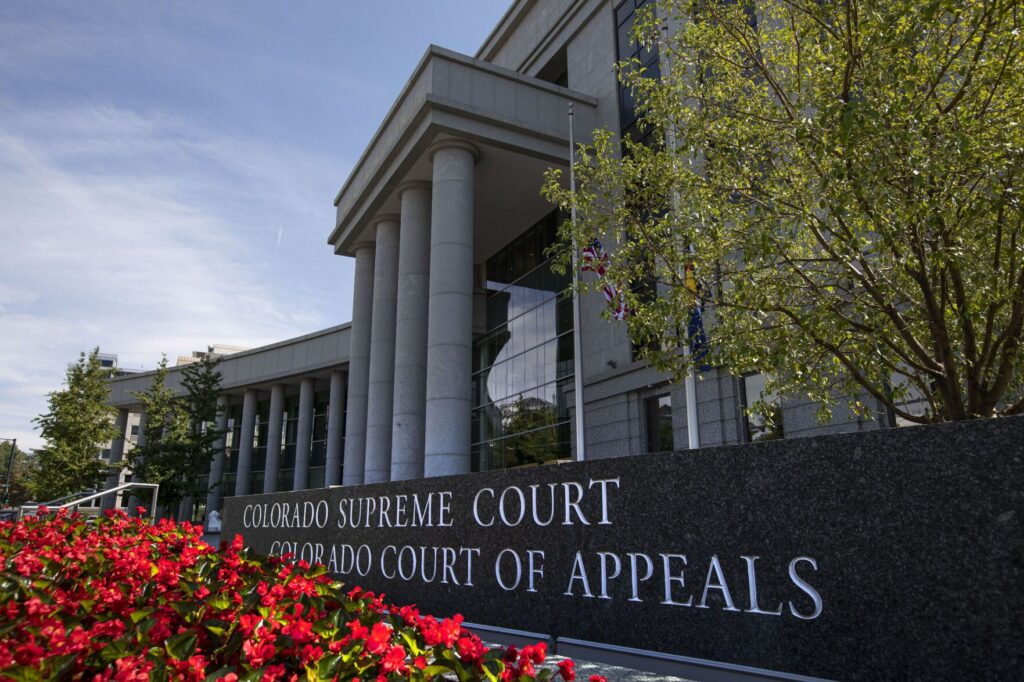TRAIL MIX | Colorado’s Senate seats have a history of musical chairs

Since statehood in 1876, Colorado has had 36 U.S. senators, including two who served non-continuous terms.
The state’s newest senator — Cory Gardner, the Republican incumbent seeking a second term next year — is hoping there won’t be a 37th anytime soon, but more than a dozen Democrats are eyeing the seat and want to add their names to the exclusive list.
If the historic record is any guide, it’s a close call whether the odds are on Gardner’s side. Sitting Colorado senators – including those who first landed in the chamber by appointment – have won their bids for re-election 18 times and lost 12 times.
In the 106 years since Colorado first picked its senators by direct election – following ratification of the 17th Amendment – 25 men have held the office. (They’ve all been men, and until 1993, they were all white men. Elected that year, Ben Nighthorse Campbell became the first Native American to represent Colorado in the Senate, while Ken Salazar, elected in 2004, was the first Hispanic senator from Colorado.)
Of those 25 senators sent to the Capitol by popular vote, 10 of them, including Gardner, belong to what’s known as Class 2, the group of senators up for election in 2020. The other 15, including incumbent Democratic Sen. Michael Bennet, are Class 3 senators, whose next election is in 2022.
Across the years, Colorado’s Class 2 senators – Gardner and his predecessors – have held office longer than their Class 3 counterparts, though the reverse has been true in recent decades.
In part, that’s because serving as Colorado’s Class 3 senator has been something like playing the drums for Spinal Tap. For 60 years after the adoption of the 17th Amendment, only a single Class 3 senator from Colorado left on his own terms, while all the others either lost their bids for re-election or died in office.
From the first popular election for Class 2 senators until the early 1970s, not a single Colorado senator in that class lost re-election, but since then three of them have been turned out by voters – Republican Gordon Allott, who was denied a third term by Democrat Floyd Haskell in 1972; Haskell, who lost a bid for a second term to Republican Bill Armstrong in 1978; and Democrat Mark Udall, whose Senate career was kept to a single term when Gardner defeated him in 2014.
Republican Lawrence C. Phipps was the first to win the Class 2 seat by direct election in 1918, followed by a second term. His successor, Democrat Edward P. Costigan, won election in 1930 and served a single term.
Democrat Edwin “Big Ed” Johnson was elected to the first of three terms in 1936. Allott, the Republican, won his first term in 1954 and was re-elected twice before being denied a fourth term by Haskell in 1972.
After defeating Haskell, Armstrong held the seat for two terms, followed by Republican Hank Brown’s one term and Republican Wayne Allard’s two terms. Next came Udall and then Gardner.
The curse on Colorado’s Class 3 seat, if there was one, appears to have lifted sometime in the mid-1970s, after Democrat Gary Hart ousted Republican Peter Dominick in the 1974 election. Since then, every senator who has held the seat has concluded his Senate career by retiring or, in one instance, resigning, when Salazar stepped down in 2009 after being appointed secretary of the interior.
But the Class 3 seat’s long run of disappointment and grief is sobering.
Democrat Charles Thomas was elected in 1912 – two years before the direct election of senator – to finish the term of Democrat Charles J. Hughes Jr., who died in office. Thomas was re-elected by popular vote in 1914 but lost his bid for a second full term in 1920 to Republican Samuel D. Nicholson, who died in office three years later.
Democrat Alva B. Adams was appointed in 1923 to fill Nicholson’s term but didn’t run in the 1924 special election, which was won by Republican Rice B. Means.
Two years later, however, in the 1926 regular election for the Senate seat, Means lost his bid for the Republican nomination to Charles W. Waterman, who went on to win the general election but died while seeking a second term in the summer of 1932.
The accursed seat changed hands three times that year.
Democrat Walter Walker was appointed to finish Waterman’s term but lost a special election months later to Republican Karl C. Schuyler, who went on to lose the regular 1932 election to Alva B. Adams, who had kept the seat warm briefly nearly a decade earlier.
Adams won a second term in 1938 but died in office three years later.
Alva B. Adams, the senator, shouldn’t be confused with his father, Democrat Alva Adams -the namesake of Adams County – who served as governor of Colorado three times, including on March 16, 1905, when Colorado famously had three governors in one day.
Following Adams’ win over Republican incumbent Gov. James H. Peabody in the contentious 1904 election – in the wake of violent labor disputes, the vote was rife with ballot-tampering and massive corruption committed by both sides – Adams took office but was soon removed by the Republican-controlled General Assembly, which installed Peabody as governor on the condition he resign so the lieutenant governor, Republican Jesse McDonald, could assume the office and serve out the term.
Republican Eugene Millikin was appointed in 1942 to succeed Alva B. Adams, the two-time senator and son of the three-time governor, and appears to have dodged the seat’s curse. He was elected to a full term two years later and won a second full term in 1950 but declined to seek a third.
Voters sent Democrat John A. Carroll to the Senate in 1956, but he was denied a second term in 1962 by Republican Peter Dominick. Dominick won a second term in 1968 but lost his bid for a third to Hart in 1974.
In the decades since, none of the seat’s occupants has been rejected by voters.
Hart won a close race for a second term in 1980 but declined to seek a third. Democrat Tim Wirth was elected in 1986 and didn’t seek re-election. Ben Nighthorse Campbell won the seat as a Democrat in 1992, then switched parties to become a Republican just over two years later and was re-elected in 1998 before retiring in 2004.
Next came Salazar, who resigned to join the Obama cabinet in 2009. Bennet, who was appointed to finish Salazar’s term, won a full term in 2010 and was re-elected in 2016.














